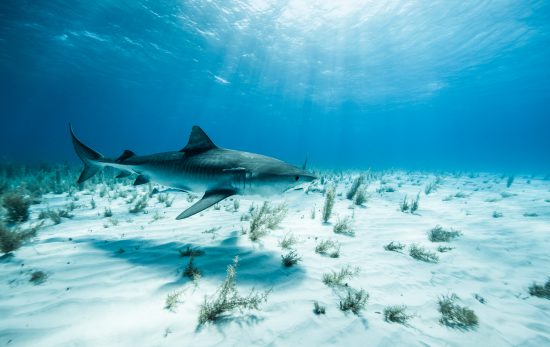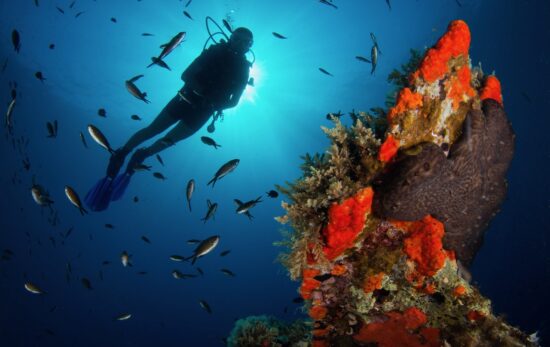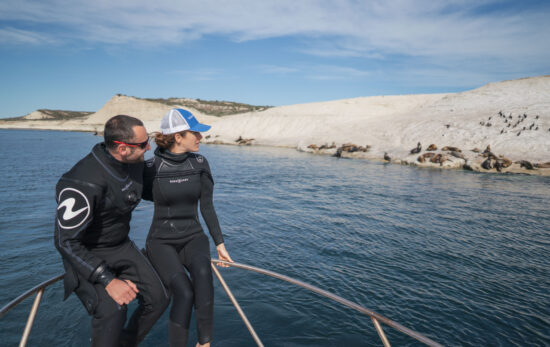When I first went snorkeling as a teenager, I found myself constantly wanting to explore beyond where the snorkel could take me. I knew, deep down, that one day I’d get my scuba certification. Shortly after my 18th birthday, I was dealt a difficult blow when I was diagnosed with Type 1 diabetes (T1D), also known as juvenile or insulin-dependent diabetes. And with that news, I discovered there were extremely strong recommendations against diving with T1D.
I was disappointed, but also realized that it was just part of my new normal. I set out to try activities like skydiving, bungee jumping and hang gliding, but always held a soft spot for anything water-related.
Years later, I was planning a trip to Thailand and a friend mentioned how amazing the diving was there. For kicks, I did a search on diabetes and diving—and learned that the Divers Alert Network (DAN) had since put together a list of guidelines for recreational diving with diabetes. Depending on the circumstances, people with T1D could now dive if they met certain criteria and took specific precautions.
For one, it’s vital to have blood sugars in a specific range while diving. A primary danger of diving with T1D is the risk of low blood sugar, or hypoglycemia, underwater. While hypoglycemia can easily be treated by eating something with sugar above water, being below water clearly makes that impossible. Divers also need to avoid the other extreme of hyperglycemia, aka high blood sugar, since it can lead to ketoacidosis.
It was the ultimate balancing act.
After reading through the guidelines and understanding what was involved, I decided to take the plunge and sign up for my open water certification after getting sign-off from my doctor. During my course, I ended up becoming an unofficial diabetes educator for my instructor and fellow classmates. I’d initially worried that my diabetes would be a burden to them, but I realized that they were supportive and curious—and happy to help if needed.
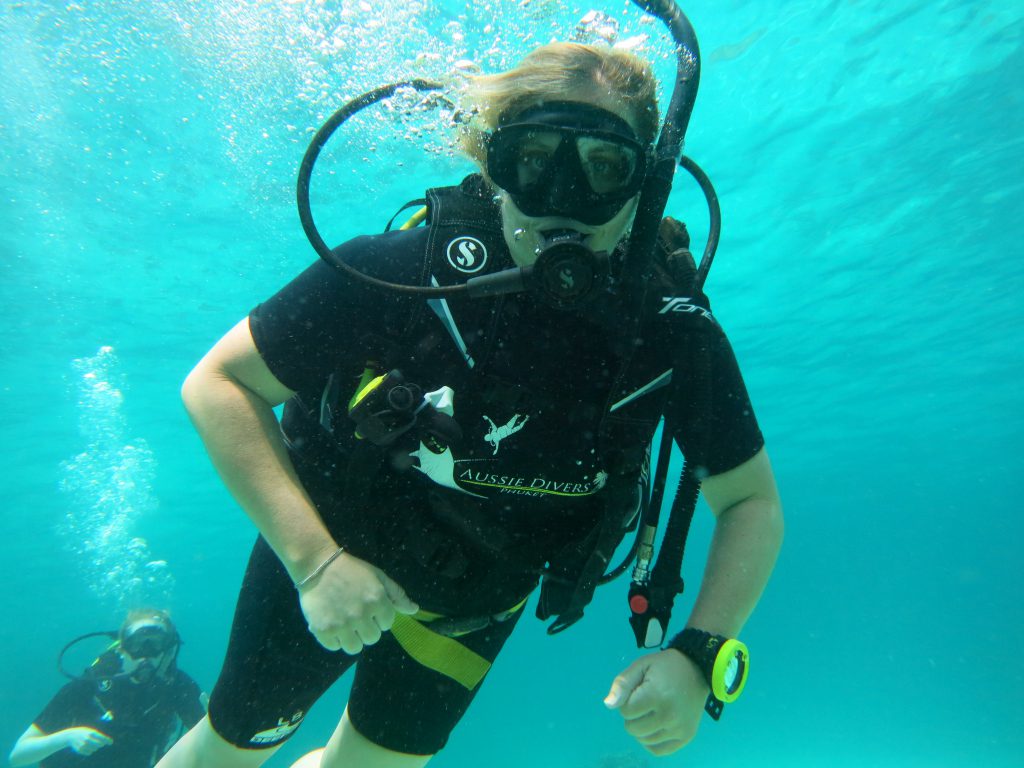
If you have Type 1 diabetes and are interested in diving, be sure to review DAN’s Guidelines for Recreational Diving with Diabetes to see if you meet all of the requirements. Diving with diabetes is challenging, and you should only do so after understanding the risks and receiving your doctor’s approval, and then following DAN’s Guidelines.
Here is my summary of the guidelines:
- Before:
- A hemoglobin AIC level of under 9.0 is recommended. If your average tends to be higher, plan your diving trip far enough in advance and work on getting your blood sugars down so that you can be under 9.0 when approaching your doctor for a note. The test measures two to three months of blood sugar control.
- If possible, schedule an in-person appointment with your doctor vs. asking them to fill the medical form out by email or phone. I found that printing out DAN’s guidelines and explaining to my doctor that I understood the challenges was helpful.
- When researching dive shops, let them know you have diabetes and choose one with a smaller average class size or ratio if you can.
- During:
- Your blood sugar should be between 150-300 before entering the water; if it’s higher or lower—or trending downward—avoid diving.
- Keep in mind that swimming is exercise, and your blood sugar will likely get lower during your dive.
- Having a protein-filled breakfast and lessening your overall insulin intake the day of the dive may help you worry less about low blood sugars.
- Create a signal to let your instructor and buddy know if you have low blood sugar and need to head to the surface.
- Since decompression stops take time, remember that it’s even more important to plan for possible lows.
- Carry some type of fast-acting glucose with you during the dive—I opted for glucose gel packs tucked into my vest since I could easily tear one open and eat it at the surface.
- Leave a Glucagon kit next to the First Aid kit on the boat and give the divemaster a printout explaining how to use it.
- Remember that continuous glucose monitors don’t work underwater. Be sure to have a blood glucose meter and ample test strips handy on the boat. Test at least 60 minutes, 30 minutes and immediately prior to each dive, as well as immediately after you surface.
- After:
- Continue to check your blood sugar throughout the day, since effects of exercise can often sneak up on you.
- Be sure to log all of your blood sugar results along with insulin and food intake. Once you figure out what works best for you, you can use this information for future dives.
- Remember that your signed medical form is often only good for one year, so you may need to ask your doctor to fill out another round of paperwork if your next dive is more than 12 months later.
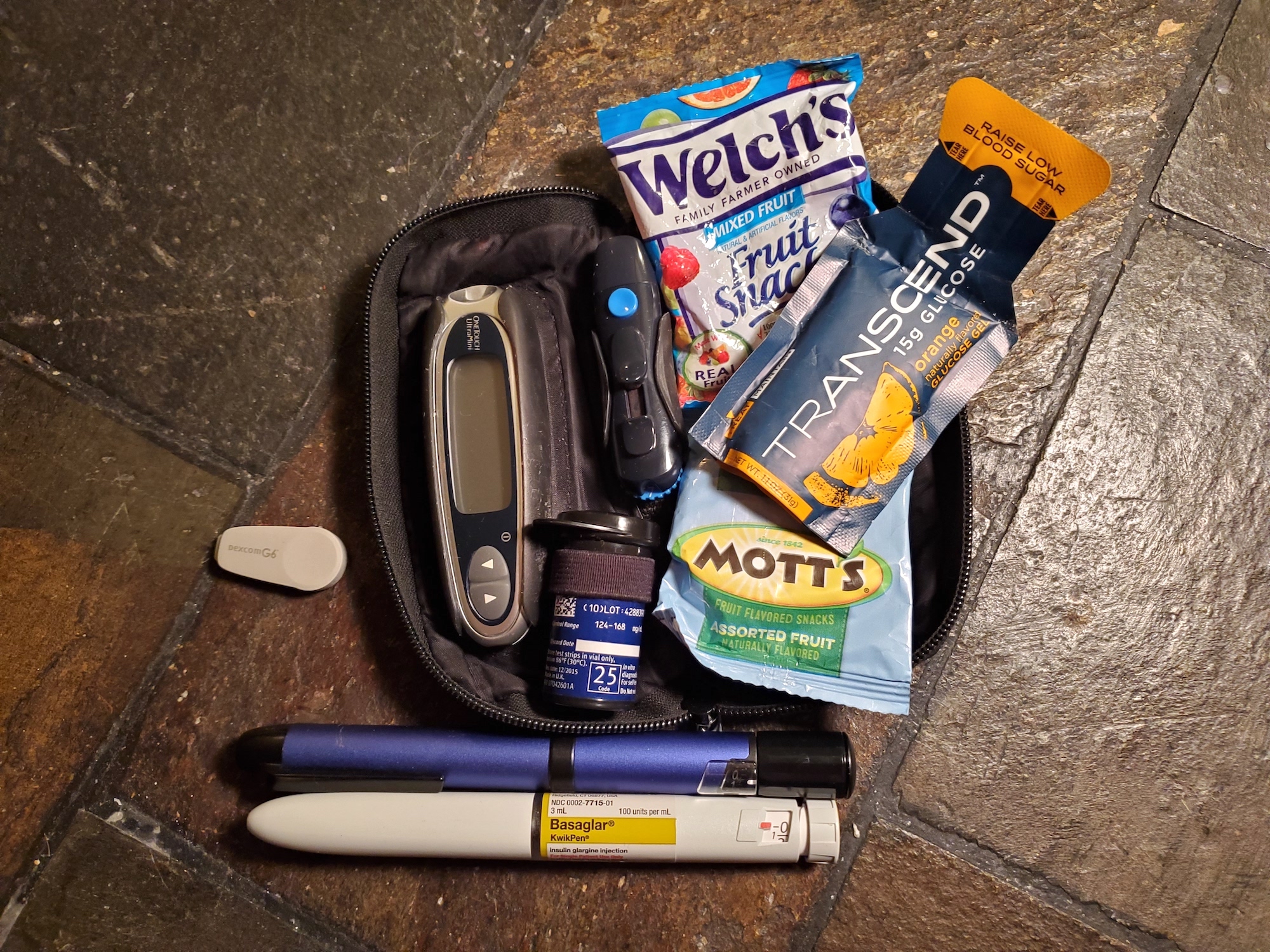
With careful planning and record keeping of my blood sugars, my open water training and initial dives went off without a hitch. And one year after receiving my certification, I went diving in Hawaii, armed with the knowledge I’d learned during my training.
Diving with diabetes required more planning than any activity I’d undertaken to date—but that also made receiving my certification and accomplishing my first few dives even sweeter.
**These tips are based on my personal experience and shouldn’t be intended as medical advice. Always check with a medical professional to see if diving is a safe fit for you personally, and only go diving with your doctor’s permission. Read and follow DAN’s Guidelines for Recreational Diving with Diabetes for specific guidelines before, during and after the dive.**
Guest Blogger: Carly Blatt
New York-based writer Carly Blatt (@adventurecarly) has extensively traveled, studied and worked abroad, covering 30+ countries on seven continents. Her travel adventures include swimming in Antarctica, bungee jumping in New Zealand, paragliding in the Alps, caving in Belize, mountain boarding in Colorado, camping in the Australian Outback, helping confused-looking tourists find their way in Manhattan, and most recently, scuba diving in Thailand and Hawaii. She has also written for ThePointsGuy.com, GoNomad.com, Matador Travel, and JohnnyJet.com, among others.
